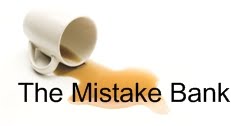I had a brilliant start-up talent when I was building my company, STI Knowledge, into a global brand. When we hired him, we hired over our heads. He had juice. We marveled at his manic performance, which often propelled all of us. When we had a crisis, he could solve it. Yes, he could have taken bigger jobs at bigger salaries but he chose to work with rebels. He knew we were right in our vision and mission, and he knew we could not do it without him. But in trying to maintain his glory, he struggled to let us go and grow.
The growth phase required the addition of staff members, systems and structure that changed the dynamics of the company. While the brilliant talent was a high-tech genius, the new stars were being made in areas like sales, marketing and education. He felt left out. He was no longer needed in every meeting. He could not simply pop into the chief executive’s office four or five times a day like old times, and the new processes and systems hindered and even prevented him from being the savior. Right before our eyes, the brilliant talent became the Brilliant Jerk.
I have listened to Brilliant Jerks proclaim, “I am the one who is always on call, who drives the most revenue, who is here on weekends and who has the knowledge.” And the Brilliant Jerk speaks the truth. But I have also seen him stick his head in the door and deflate an entire management team. A growth company needs enablers, not disablers....
So what’s the right answer? Get rid of the Brilliant Jerk as fast as you possibly can.
The biggest waste of time in a high-growth company is the period that falls between when you know someone does not fit the growth culture and the time you terminate the relationship. On average, I’d say the Brilliant Jerk hangs around for 1.5 years; decisive action can limit the period to less than six months. The likes of Bill Gates, Steve Jobs and Roger Ailes have had no problem showing Brilliant Jerks the door, and all built world-class brands faster and better than the rest of us. I wish I could tell you I was as tough as those guys. I learned the hard way by not taking action when I should have.
I can tell you from personal experience that coddling the Brilliant Jerk — letting him work from home, consoling him, giving him special assignments — does not work. It just kicks the can down the road. At my company, I was worried about the impact his firing would have on other employees who had shown him respect. To my surprise, the reaction was, “What took you so long?”
One of the worst feelings I have ever experienced was looking at the Brilliant Jerk and saying, “We have a vision, and I have decided you are no longer a match for where we need to go.” One of the best feelings came the next day when everyone was moving forward together.
I have had the weird experience of feeling terrible about firing an employee, then having the other employees telling me the next day, "What took you so long?" A further regret is that this employee wasn't even brilliant!
